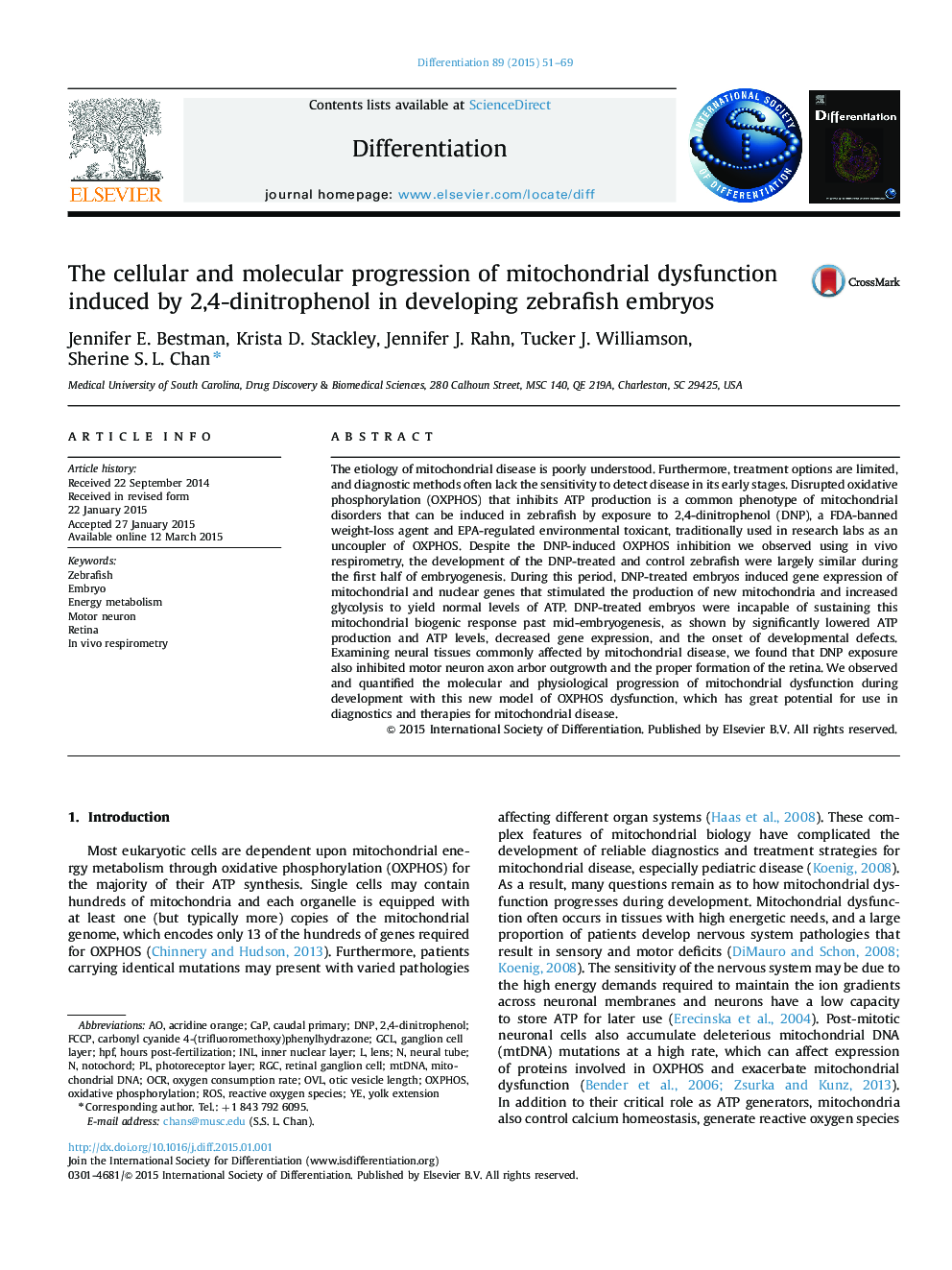| Article ID | Journal | Published Year | Pages | File Type |
|---|---|---|---|---|
| 2119309 | Differentiation | 2015 | 19 Pages |
•2,4-dinitrophenol (DNP)-exposed zebrafish is a new model of mitochondrial disease.•DNP-treated embryos upregulate mechanisms to increase ATP for normal development.•Mid-embryogenesis, these mechanisms are insufficient and severe phenotypes manifest.•As in humans, motor neuron axon arbor outgrowth and retinal lamination defects occur.•New model may be used to discover much needed therapeutics for mitochondrial disease.
The etiology of mitochondrial disease is poorly understood. Furthermore, treatment options are limited, and diagnostic methods often lack the sensitivity to detect disease in its early stages. Disrupted oxidative phosphorylation (OXPHOS) that inhibits ATP production is a common phenotype of mitochondrial disorders that can be induced in zebrafish by exposure to 2,4-dinitrophenol (DNP), a FDA-banned weight-loss agent and EPA-regulated environmental toxicant, traditionally used in research labs as an uncoupler of OXPHOS. Despite the DNP-induced OXPHOS inhibition we observed using in vivo respirometry, the development of the DNP-treated and control zebrafish were largely similar during the first half of embryogenesis. During this period, DNP-treated embryos induced gene expression of mitochondrial and nuclear genes that stimulated the production of new mitochondria and increased glycolysis to yield normal levels of ATP. DNP-treated embryos were incapable of sustaining this mitochondrial biogenic response past mid-embryogenesis, as shown by significantly lowered ATP production and ATP levels, decreased gene expression, and the onset of developmental defects. Examining neural tissues commonly affected by mitochondrial disease, we found that DNP exposure also inhibited motor neuron axon arbor outgrowth and the proper formation of the retina. We observed and quantified the molecular and physiological progression of mitochondrial dysfunction during development with this new model of OXPHOS dysfunction, which has great potential for use in diagnostics and therapies for mitochondrial disease.
Graphical abstractExposing zebrafish embryos to 2,4-dinitrophenol (DNP) induces mitochondrial dysfunction that models many aspects of mitochondrial disease. Zebrafish embryos upregulate gene expression, mitochondrial biogenesis, and glycolysis in order to compensate for the near immediate mitochondrial dysfunction and decreased ATP production that results from exposure to DNP. These compensatory homeostatic processes fail midway through embryogenesis resulting in the fish developing abnormal peripheral neuron development and retinal and optic nerve abnormalities similar to those associated with mitochondrial disease.Figure optionsDownload full-size imageDownload high-quality image (247 K)Download as PowerPoint slide
